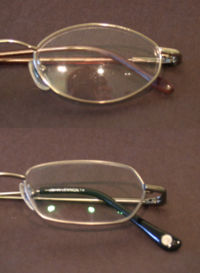
Photo from wikipedia
Optically induced magnetic resonances (OMRs) are highly tunable scattering states that cannot be reproduced in systems that only support electric resonances, such as in metals, lossy, or low-index materials. Despite… Click to show full abstract
Optically induced magnetic resonances (OMRs) are highly tunable scattering states that cannot be reproduced in systems that only support electric resonances, such as in metals, lossy, or low-index materials. Despite offering unique scattering and coupling behavior, the study of OMRs in thin films has been limited by synthesis and simulation constraints. We report on the absorption and scattering response of OMR-based thin films composed of monodisperse crystalline silicon nanoparticles synthesized using a scalable nonthermal plasma growth technique and tractable simulation framework. The synthesis is solvent and ligand free, ensuring minimal contamination, and crystalline particles form with high yield and a narrow size distribution at close to room temperature. Using a scalable high-throughput deposition method, we deposit random particle films, without the need of a solid host matrix, showing near complete blackbody absorption at the collective OMR. This is achieved using 70% less material than an optimized antireflective-coated crystalline silicon thin film. The film exhibits strongly directional forward scattering with very low reflectivity, thus giving rise to angle- and polarization-insensitive antireflection properties across the visible spectrum. We find that, while commonly used effective medium models cannot capture the optical response, a modified effective medium accounting for multipole resonances and interparticle coupling shows excellent agreement with experiment. The effective permittivity and permeability are written in a mode and cluster resolved form, providing useful insight into how individual resonances and nanoparticle clusters affect the overall film response. Electric and magnetic-mode coupling show dramatically different behavior, resulting in uniquely different spectral broadening.
Journal Title: ACS applied materials & interfaces
Year Published: 2022
Link to full text (if available)
Share on Social Media: Sign Up to like & get
recommendations!